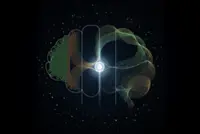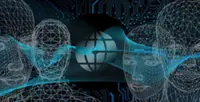Some users have voiced concerns about the use of the image-generating feature. In a 2016 documentary, Miyazaki (pic) called AI 'an insult to life itself'. — AP
Animated movies, like those from famed Japanese filmmaker Hayao Miyazaki, are not made in a hurry. The intricate hand drawings and attention paid to every single detail can make for a slow, potentially yearslong process.
Or, you could simply ask ChatGPT to turn any old photo into a facsimile of Miyazaki’s work in just a few seconds.
Many people did precisely that this week after OpenAI released an update to ChatGPT on Tuesday that improved its image-generation technology. Now, a user who asks the platform to render an image in the style of Studio Ghibli could be shown a picture that would not look out of place in the films My Neighbor Totoro or Spirited Away.
On social media, users quickly began posting Ghibli-style images. They ranged from selfies and family photos to memes. Some used ChatGPT’s new feature to create renderings of violent or dark images, like the World Trade Center towers falling on Sept 11 and the murder of George Floyd.
Sam Altman, OpenAI’s CEO, changed his profile picture on the social platform X to a Ghiblified image of himself and posted a joke about the filter’s sudden popularity and how it had overtaken his previous, seemingly more important work.
Kouka Webb, a dietitian who lives in Tribeca, turned photos from her wedding into Studio Ghibli-esque frames. Webb, who is 28 and grew up in Japan, said seeing herself and her husband stylised in such a way was surprisingly moving.
“My Japanese mother passed away and I just feel really homesick,” she said. “I found a lot of joy in making those images. It was just a fun way to turn memories into a format that I grew up with.”
She posted the photos on TikTok, where she said she had received criticism from some commenters for using artificial intelligence instead of commissioning a human artist.
Online, some users have also voiced concerns about the use of the image-generating feature. In a 2016 documentary, Miyazaki called AI “an insult to life itself”. A clip from the film circulated on X after the filter’s sudden popularity. (Studio Ghibli-inspired AI art has been popular in the past, but the latest OpenAI offering is perhaps the most realistic iteration of Miyazaki’s style yet.)
As AI platforms have become more powerful and popular, a growing number of people in creative fields, including writers, actors, musicians and visual artists, have expressed similar frustrations.
“To a lot of people, having our art stolen, they don’t view it as anything personal – like, ‘Oh, well, you know, it’s just a style; you can’t copyright a style’,” Jonathan Lam, a storyboard artist who works in video games and animation, told The New York Times in late 2022 when discussing Lensa AI, a different image-generating platform. “But I would argue that for us, our style is actually our identity. It’s is what sets us apart from each other. It’s what makes us marketable to clients.”
In 2024, a group of more than 10,000 actors and musicians, including writer Kazuo Ishiguro, actor Julianne Moore and musician Thom Yorke of Radiohead, signed an open letter criticising the “unlicensed use of creative works” to train AI models, including ChatGPT.
(The New York Times filed a copyright infringement lawsuit against OpenAI and its partner, Microsoft, accusing them of using published work without permission to train artificial intelligence. They have denied those claims.)
Emily Berganza, a 32-year-old sculptor who lives in Long Island City, said she used ChatGPT to turn several memes into Ghibli-style pictures. She was impressed by the accuracy and detail but said she also worried about what the rise of such technology meant for creative work and considered it to be a “threat”.
By Thursday, Berganza said ChatGPT appeared to have tightened restrictions on what images users were allowed to Ghiblify.
“Our goal is to give users as much creative freedom as possible,” Taya Christianson, a spokesperson for OpenAI, said in an emailed statement. “We continue to prevent generations in the style of individual living artists, but we do permit broader studio styles – which people have used to generate and share some truly delightful and inspired original fan creations.”
Christianson also pointed to OpenAI’s description of its latest update, which said that the platform had “opted to take a conservative approach” with its latest image generation update.
“I’m still kind of formulating thoughts on how it affects like the future for a lot of these artists and illustrators,” Berganza said. “But then again, I also have to be open to the concept of how this is now going to be integrated in our society.” She said she did not want to fall behind. – ©2025 The New York Times Company
This article originally appeared in The New York Times.





